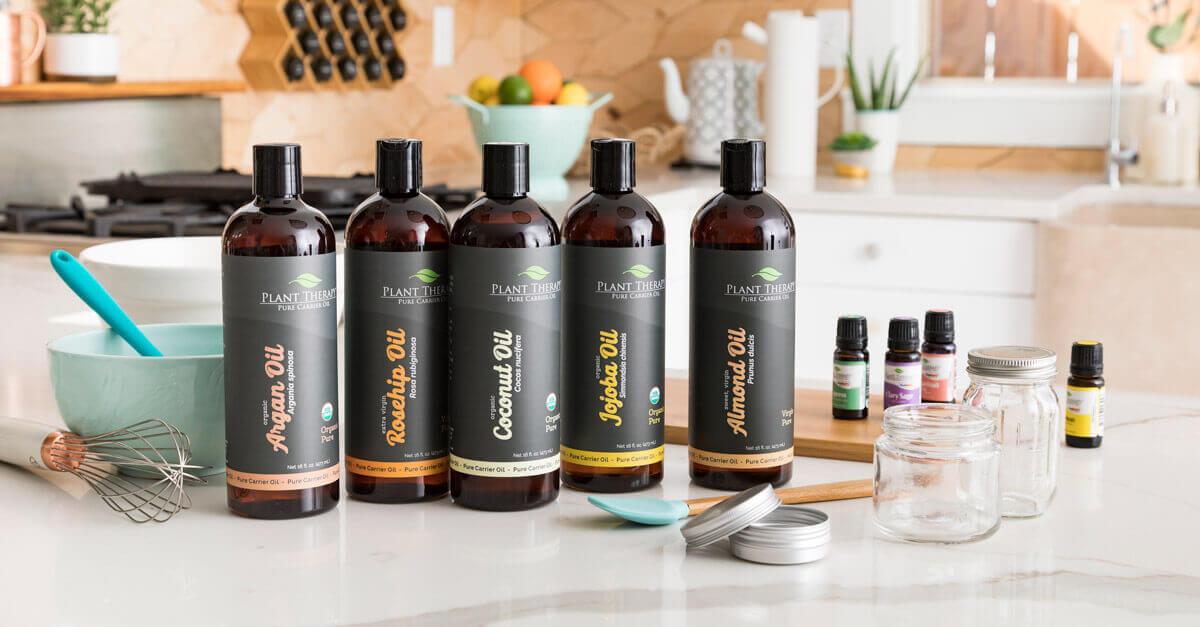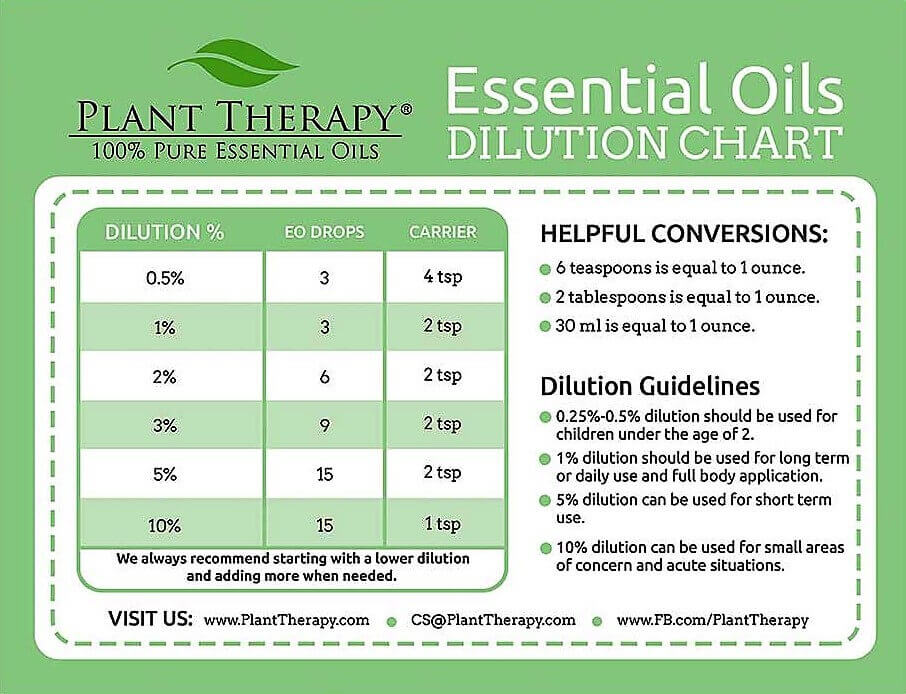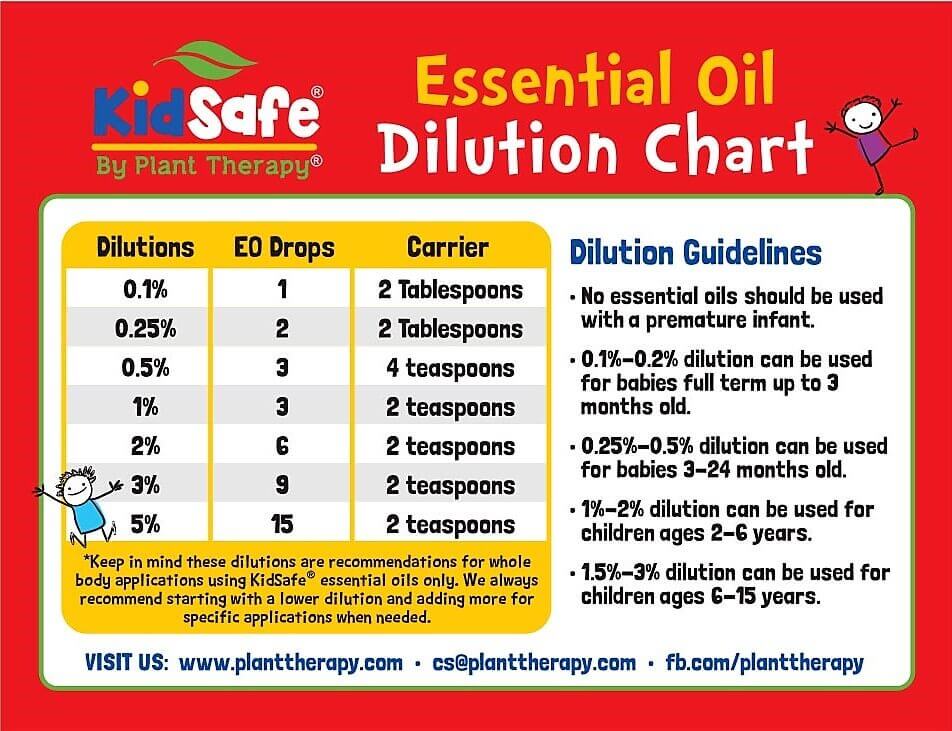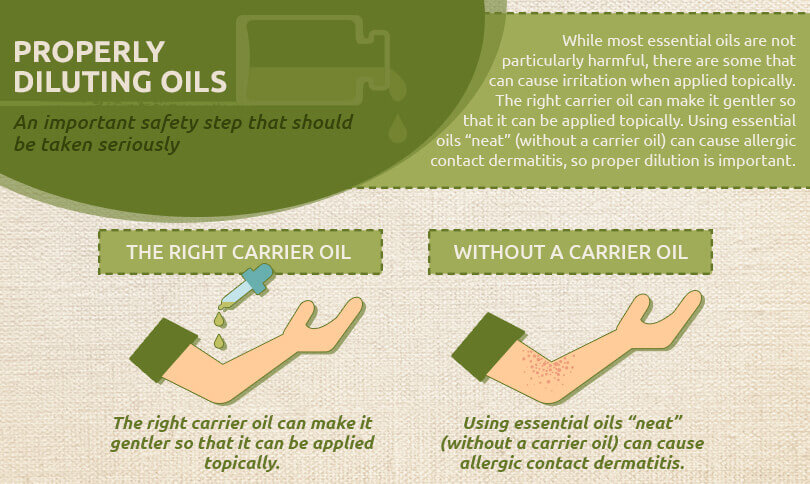Here at Plant Therapy, we are committed to making sure you have the information you need to safely and effectively use all of your essential oils. Due to the volatile and highly concentrated nature of essential oils, comprehensive and understandable guidelines on their appropriate dilution is critical to ensure everyone’s safety.
The Purpose of Dilution
Safety and essential oil dilution are inextricably connected to one another. Using an essential oil directly out of the bottle, without diluting it first, can quickly become a one-way ticket to sensitized, irritated skin, or worse. According to world-renowned Essential Oil Safety Expert Robert Tisserand, essential oil dilution has two primary safety concerns. “One, to avoid skin reactions: irritation, sensitization, and phototoxicity. Two, to avoid systemic toxicity, such as fetotoxicity, hepatotoxicity, carcinogenicity, and neurotoxicity. Adverse skin reactions are obvious when they happen, but systemic toxicities may not be. Skin reactions are totally dilution-dependent, and safety guidelines exist to minimize the risk.”
Simply put, we dilute essential oils before applying to the skin to minimize adverse reactions and systemic toxicity. Applying undiluted essential oils to your skin can easily cause short term or long term adverse reactions, and there is no good reason to take the risk.
Diluting not only saves your skin, but your bank account will appreciate it, too. Diluting with a carrier oil before applying to your skin prevents the essential oil from evaporating as fast as it would if not used with a carrier oil. This reduction in volatility means that more of the essential oil’s therapeutic properties are able to absorb into your skin, it can be spread over a larger area, and you will use less essential oil overall.
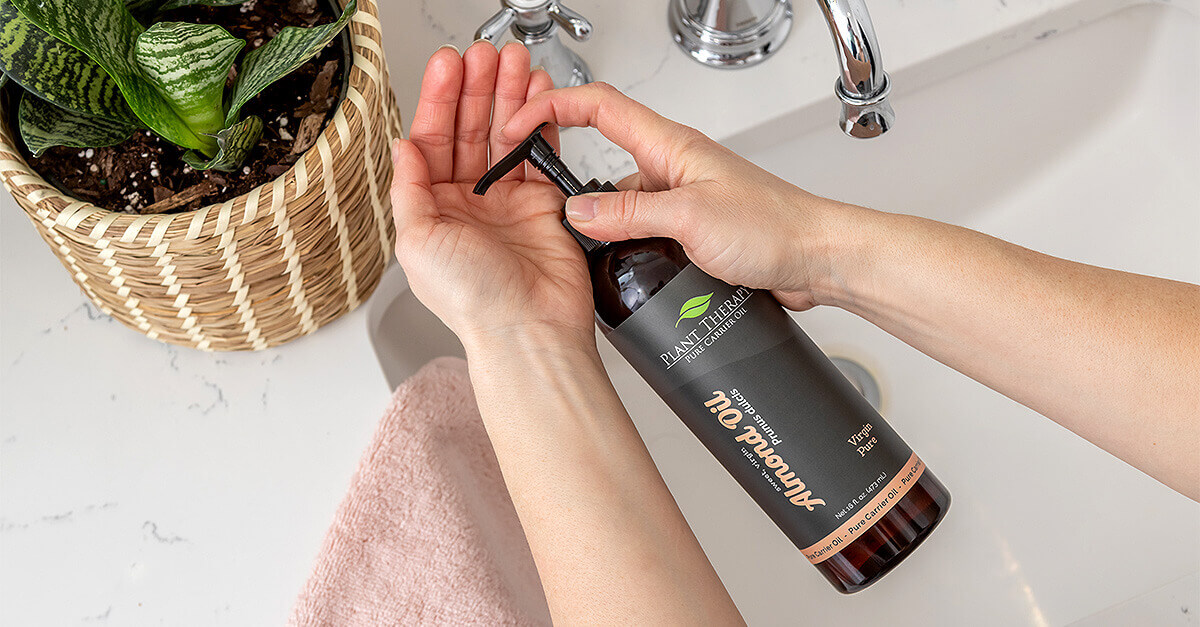
Many Types of Carrier Oils
While carrier oils seem like the obvious choice for carrying essential oils, they are not your only option. Lotions, creams, butters, shampoos, conditioners, castile soap, and aloe jellies are fantastic choices to dilute your oils, and many of these products may include natural preservatives, which may suit your needs.
Dilution Rates for Different Situations
Plant Therapy aligns its dilution rate to the Tisserand Institute’s recommendations. These values are approximate and have been rounded to whole drops. Please keep in mind that “drops” are not an exact measurement since the drops depend on the size of the orifice reducer and the viscosity of the oil. Also, the dilution rates presented here do not imply that each rate is safe for all essential oils in all situations.
1% dilution
This rate is recommended for children over the age of 2, facial applications, long term use, daily use, and accessing the subtle energetic effects of the oil.
- 10 mL/ 2 tsp = 3 drops
- 15 mL/ 3 tsp/ 1 tbsp = 4 drops
- 30 mL/ 6 tsp/ 2 tbsp/ 1 oz = 9 drops
2% dilution
This rate is recommended for children, bath and whole body products, and is great for regular daily use of an oil.
Many of our KidSafe blends have dilution recommendations that range from 2-5%. These dilutions are fine to use with children under the age of 10 for spot treatment or acute situations. We do always recommend starting on the low end of dilution recommendations and then working your way up as needed.
- 10 mL/ 2 tsp = 6 drops
- 15 mL/ 3 tsp/ 1 tbsp = 9 drops
- 30 mL/ 6 tsp/ 2 tbsp/ 1 oz = 18 drops
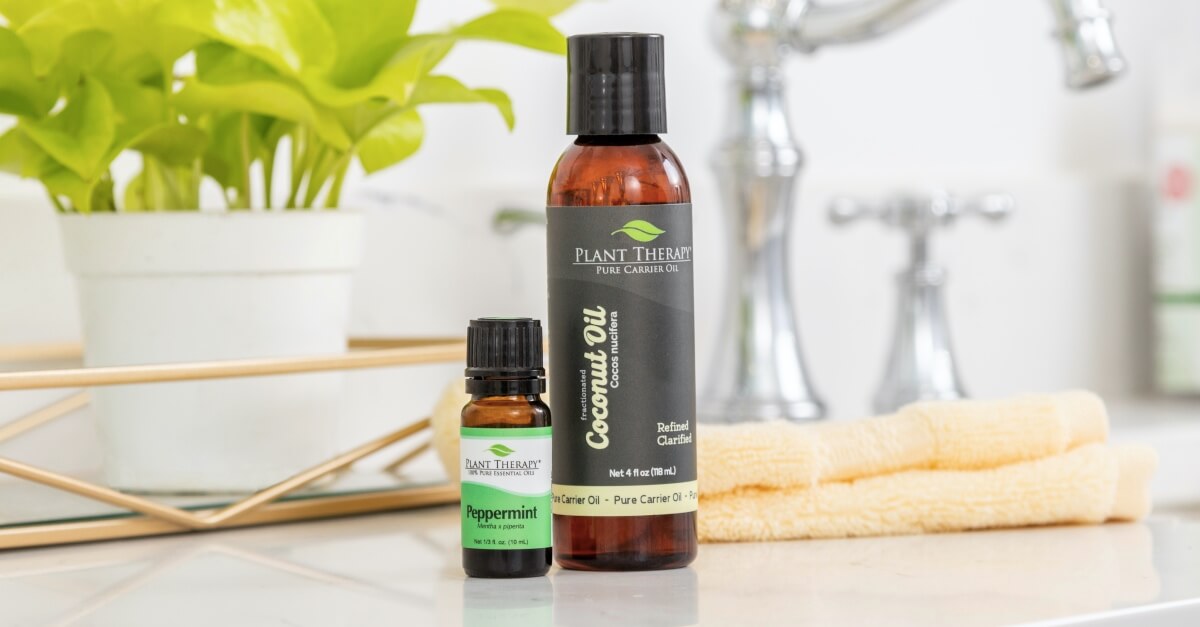
3% dilution
This rate is recommended for specific localized discomfort.
- 10 mL/ 2 tsp = 9 drops
- 15 mL/ 3 tsp/ 1 tbsp = 13 drops
- 30 mL/ 6 tsp/ 2 tbsp/ 1 oz = 27 drops
5% dilution
This rate is recommended for short term use for a specific concern, no longer than two weeks.
- 10 mL/ 2 tsp = 15 drops
- 15 mL/ 3 tsp/ 1 tbsp = 22 drops
- 30 mL/ 6 tsp/ 2 tbsp/ 1 oz = 45 drops
10% dilution
This rate is recommended for small areas of concern and acute situations.
- 10 mL/ 2 tsp = 30 drops
- 15 mL/ 3 tsp/ 1 tbsp = 45 drops
- 30 mL/ 6 tsp/ 2 tbsp/ 1 oz = 90 drops
Essential Oil Dilution Chart
A good rule of thumb is to use one drop of essential oil per teaspoon of carrier oil for a 1% dilution. For a 0.50% dilution, because you cannot measure half of one drop, increase the amount of carrier oil used. If you are unable to add more carrier oil, round down to get a whole number for you essential oil drops. For example, 1.5 drops would become 1 drop. Use the dilution chart below or check out our comprehensive dilution chart.
Dilution for Young Children
Children have thin, porous skin that readily absorbs anything topically applied. We do not recommend essential oils be used topically on premature infants, but you can use essential oils sparingly with full-term infants. The dilution for full-term infants, ages 0-3 months, is 0.10% to 0.20%. This equals 1-2 drops of essential oil per 1 ounce of carrier when being used for whole body application. For spot usage, you can use 3-9 drops of essential oil per 1 ounce of carrier.
Additionally, we recommend that anyone wanting to use essential oils on children under the age of two years consult with a Certified Aromatherapist or medical professional to help you decide if this is the safest and most effective course of action.
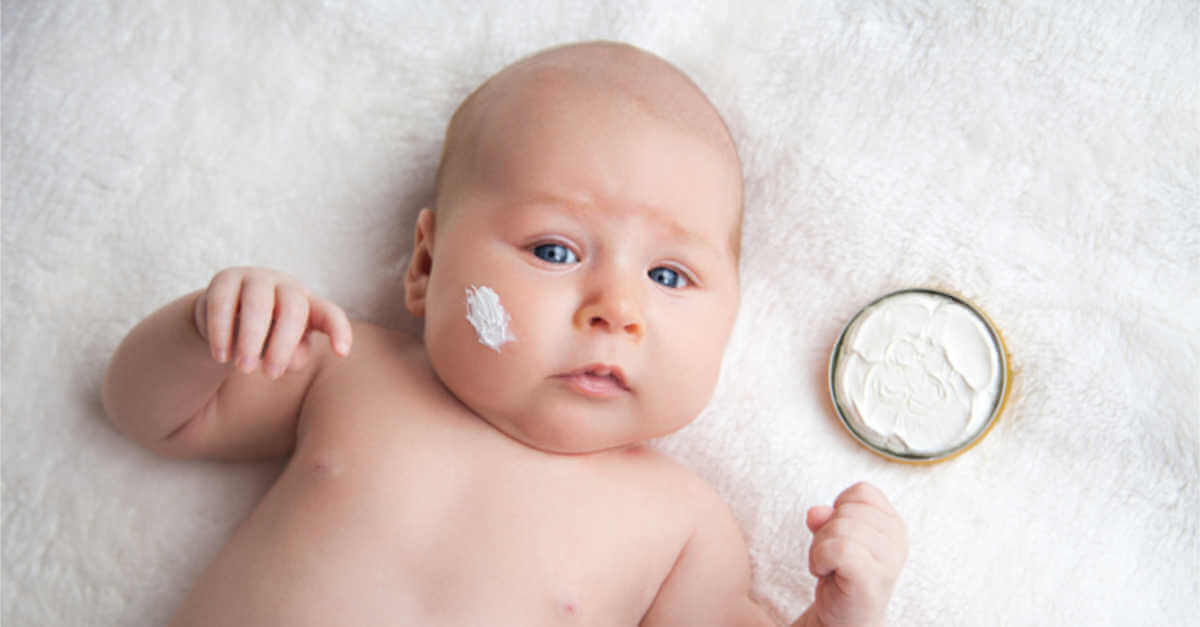
For children ages 3-24 months, we recommend a general dilution of 0.25%-0.5%. This equals 2-4 drops of essential oil per 1 ounce of carrier when being used for whole-body application. For spot usage, you can use 9-27 drops of essential oil per 1 ounce carrier.
For children ages 2-6 years, we recommend a general dilution of 1%-2%. This equals 9-18 drops of essential oil per 1 ounce of carrier when being used for whole-body application. For spot usage, you can use 9-45 drops of essential oil per 1 ounce of carrier.
KidSafe Essential Oil Dilution Chart
The dilutions recommended on this chart are for whole-body applications using our KidSafe essential oils and blends only. For both adults and children, we recommend starting with a lower dilution and adding more for specific applications when needed.
Contact an Aromatherapist Before Going “Neat”
If you still want to use an undiluted essential oil topically, please get advice from a Certified Aromatherapist first. There are some specific situations where using oils neat may be appropriate, however, err on the side of caution. A sudden burn after touching a hot pan or a stinging bug bite are both examples of acute, short-term issues where using an oil neat may be beneficial. If this is the case, receive professional guidance on safe usage. Not only can some essential oils irritate the skin, but you will increase your risk for sensitization. Please note that we always urge safe, conservative use of essential oils so that you can continue to reap the benefits of these wonderful tools without creating additional problems.
Contraindications to Consider
If you are on a course of treatment with prescribed medication, have epilepsy or asthma, have a compromised immune system, are pregnant, breastfeeding, or have any doubts about how an essential oil may negatively affect your health, seek advice from your physician.
Stay Safe!
When it comes to essential oils, the saying “I’d rather be safe than sorry” should be taken seriously. Applying essential oils directly to your skin without proper dilution increases the risk of adverse reactions significantly. Keeping safe use of essential oils in mind, always use the lowest dilution possible that gives you effective results.
If you are concerned about a negative reaction to a new essential oil, we recommend conducting a patch test. For first time use of an essential oil, a safe practice is to place a drop of diluted essential oil to a small area of skin, such as the inside elbow. After application, be aware of adverse reactions for the first 24 hours. Possible reactions include skin irritation, headache, nausea, respiratory complaints, or dizziness.
**The advice shared is not intended to diagnose, treat, cure, or prevent any illness or disease nor is it intended to replace proper medical advice. When using essential oils we always recommend you consult with your doctor.
Source: Plant Therapy
